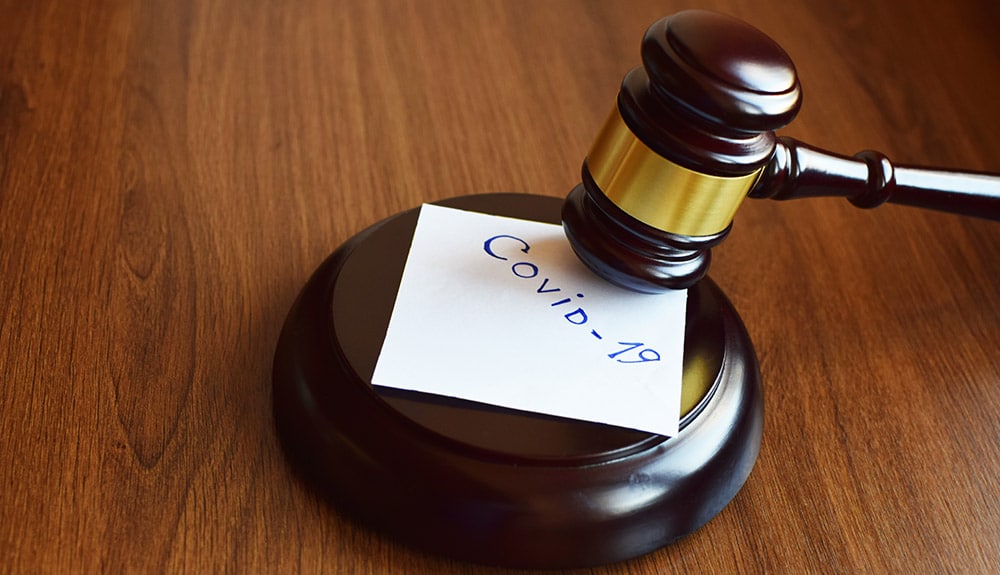The COVID-19 health crisis isn’t just altering Thanksgiving and holiday travel plans. It’s also wreaking havoc on the courts.
Federal and state courts have contorted themselves to respond to shut-downs and virtual operations driven by COVID-19. Many were forced to close early in the pandemic. As recently as September, a large number were able to reopen following regional and state shutdowns, embracing social distancing, virtual appearances, limited scheduling and a raft of new health and safety protocols. Even the U.S. Supreme Court broke with tradition and offered its first live audio feed of oral arguments, conducted telephonically) on a trademark case back in May.
A new normal has settled on courthouses around the U.S. that includes all manner of cleaning and social distancing practices. More importantly, schedules and appearance protocols have changed. Some jury trials have resumed—with restrictions—in different parts of the country. Other courts have continued with limited in-person proceedings, coupled with remote appearances and ample plexiglass dividers to further separate those in attendance.
Know Your Court
With different COVID approaches, it’s incumbent on attorneys to continually revisit the schedules and general practices of the courts where they need to file or appear. Thanks to the Administrative Office of the U.S. Courts, a helpful resource of federal court operations information related to operation and public safety issues can be found here. Also, the National Center for State Courts created an online resource with information and links on COVID-19 information related to state courts. And the American Bar Association has provided a wealth of information in the wake of the legal system’s efforts to adapt to COVID-19.
For countless attorneys, the ongoing pivot of the court system in response to the virus requires creating a plan to ensure deadlines aren’t missed and legal matters can continue uninterrupted. Even once simple actions like notarization of documents may need to be rethought, and then verified and re-verified to avoid any last-minute surprises.
Calendaring has never been more important. Noting deadlines, filing and appearance dates is only the first step. A wise move is to schedule verification triggers a week or two in advance. This allows you to check in with the courts to verify operations haven’t changed and the agreed-on dates and deadlines still apply. If there are unexpected changes, this should offer enough time for you to adjust as well. It’s also not a bad idea to set up similar check-ins with clients in case their situations change in response to COVID.
In addition, attorneys also have to consider in-person CLE requirements in their state or territory. Again, the ABA has provided a handy resource listing CLE requirement suspensions or related changes involving 34 states, plus Puerto Rico. The site is updated periodically.
The Lingering Pivot
While good news appears to be on the horizon regarding treatments and potential vaccines for COVID-19, the reality is this virus will be impacting federal and state court systems for some time to come. Attorneys will need to adapt to a new normal of checking, rechecking and checking again where dates, courthouse health protocols, clients and all manner of other legal practice areas are concerned in order to stay ahead of unplanned changes. This is the new reality of COVID on the courts and the practice of law.



